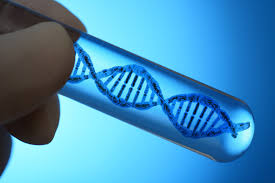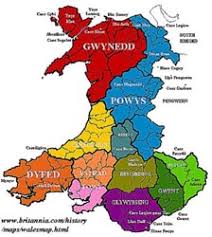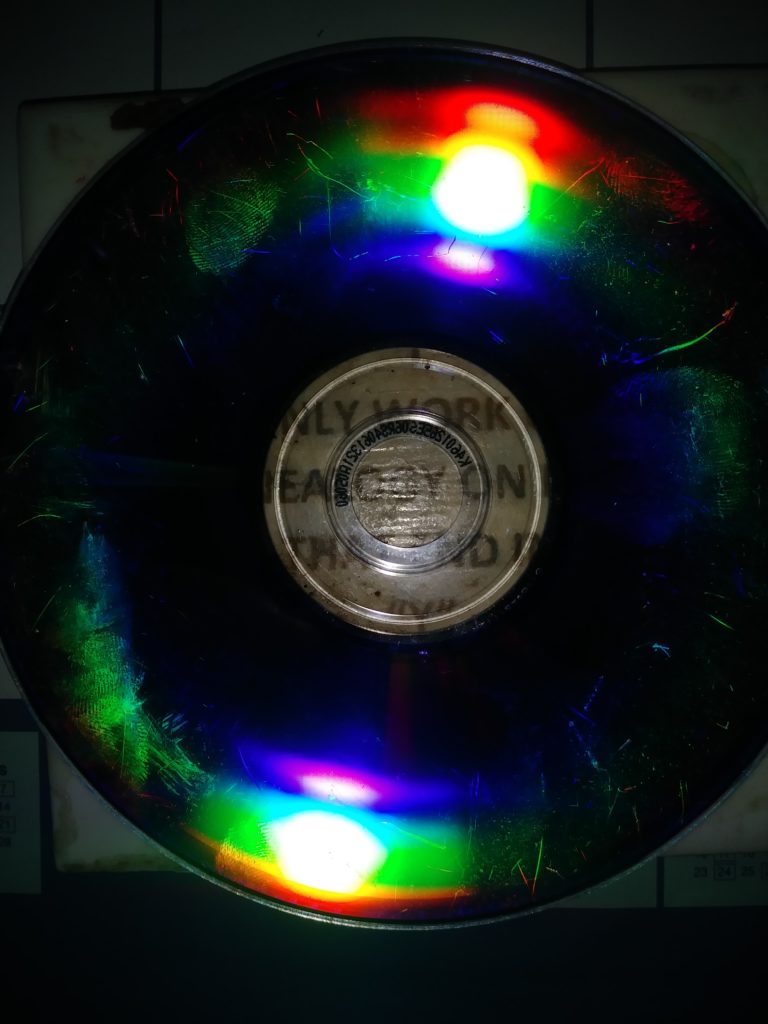
Last week I blogged about my strange experience looking for my Hollingshead family going from England to Barbados to Pennsylvania/New Jersey. I was desperately searching for a document to show proof that my ancestor, Daniel, was the individual in all of those locations.
Some odd happening occurred – a dream, an undelivered email, an internet site popping up after the electricity had been turned off – put me back on track. Here’s what happened this week…
Although the member of my local genealogy association that I had reached out to for help in connecting with a presenter’s email was returned as undeliverable, I used the same email address and reached the person I was seeking a few minutes later. She responded she was unavailable but when get back with me soon.
I’ve signed up for a British seminar online that I found by “looking small” as instructed in my dream. It’s scheduled for Friday and I’m eagerly awaiting it.
Being impatient, I had a hunch that the dream meant more than just the upcoming lecture. I don’t know why I did the following, but I did and I’m glad of that. I decided to check Ancestry.com hints for Daniel. I don’t use the hint option very often. I do sometimes if I’m starting a new search for a client but for my own tree, not so much. In case you aren’t aware, your Ancestry hints never really leave you. If you click “Ignore” that isn’t the same as delete – which isn’t an option. When you Ignore, it simply goes to the Hint section and is placed under that heading. The other categories are Undecided and Accepted. Accepted hints are all those that are showing in your Facts section, Undecided are those you can’t make up your mind about after you’ve reviewed it.
In my Undecided section, I had about 15 hints and most were completely wrong – wrong locations (like Ohio and I was searching before there was even an Ohio territory), wrong time period (like the 1900’s and I needed 1600-1700’s), or wrong names (like Hollins). There were 2 interesting hints, however, that I clicked on and both were from a DNA relative I’ve corresponded with in the past. I trust her work and she always uses citations! The hints were notes she had taken from old texts she had found in her local library. Lucky lady, she lives close to an awesome research library.. I wanted to find the original books to check her notes so I did a Google book search (on Google, click the “Other” box and then click “Books” is the easiest to find and lo and behold, this is what I discovered:
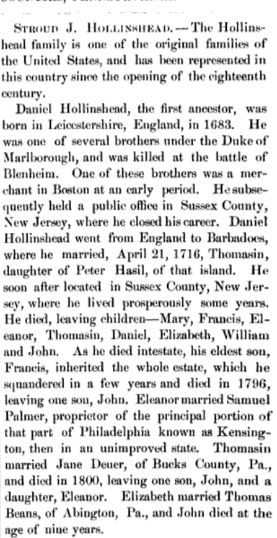
| Alfred Mathews. History of Wayne, Pike and Monroe Counties, Pennsylvania. Philadelphia: R. T. Peck & Co,1886, p. 1156. Even though this is exactly what I’m looking for regarding the route of immigration, there is no proof, other than that Stroud J. Hollinshead, a likely descendant, shared the info for his personal biographical sketch. Sigh! He even got some of the facts wrong. The second paragraph is a hot mess; How could Daniel, the first ancestor, be killed at the Battle of Blenheim and then hold public office in Sussex County, New Jersey? Quite a feat, I say. The date of birth is off by a few years. Didn’t mention the first wife, Ann Alexander, from whom I’m descended but does mention their child, Mary, as the daughter of the second wife, Thomasin. Mary married a Duer; according to this bio, so did Mary’s stepmom after the death of Daniel. Hmm, but something isn’t quite correct there, either. Thomasin was a female and the information states she married a Jane Deuer. I suspect they meant John as this would have been the early 1700’s. Then I found the following interesting story: |
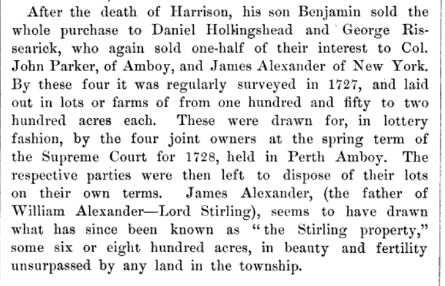
| Rev. John C. Rankin, DD. The Presbyterian Church in Basking Ridge, NJ. Jersey City: John H. Lyon, 1872., p.7. |
I knew Daniel was flipping property but I didn’t know that he had sold to a James Alexander of New York. That peaked my interest as his first wife was an Alexander and I’ve not been successful in locating her family. So I read up on James Alexander and Lord Stirling. The family liked to hide among other Alexander families in Ireland and France where they fled after picking the wrong political side in Scotland. Scholars haven’t been able to sort through all the stories the family told in the documentation they left behind of who was related to whom as the same individual’s tales changed from time to time. Then, there’s the whole timely topic of race relationships. Lord Stirling made his money partially from the slave trade while father James was alive and didn’t object. My Daniel, however, appeared to have not been in favor of slavery. He brought a slave family with him to New Jersey but it appears there was manumision. I told myself (no proof here!) that Daniel was empathetic as he was purportedly an indentured servant, though others felt this showed he was of the Quaker faith. Yet, as I learned more about James Alexander, I discovered that Daniel’s second wife Thomasin left several slaves to her children when she died so the couple may not have the same shared beliefs or, I’m completely wrong about Daniel. More research definitely needed.
The Presbyterian Church reference provides another important clue. Some believe that Daniel was Quaker but I’ve found nothing to support that. He and his children were baptized in the Church of England in England and Barbados, Some of the Alexander land was later donated to the Presbyterian Church. That’s not surprising since James was a Scott and probably of that faith. Further reading informed me there were no Quakers in the the area when Daniel relocated there. If he had been a devout Quaker, he would have likely settled in Bucks County, Pennsylvania as the Duer’s initially did. This would explain why I’ve never found a Quaker record for Daniel.
Although all of this is interesting to my research, the last weird occurrence happened while I was reading online. My husband and I share an office and he decided he was going to clean his workspace. He is a piler and I’m a filer – he has piles everywhere and I have everything sorted in a variety of devices (handing file folders, in/out baskets, file cabinets, tubs in folders, etc.). As I was deeply involved in an old text my husband said, “Is this yours?” He was holding a CD. I haven’t used CD’s in I don’t know how long so I shook my head no. “Should I toss it?” he asked. “What’s on it?” I replied. “The theme song of Pirates of the Caribbean.” I thought he was kidding me. “Yeah, right.” I said. “Seriously,” he replied. He thought I had recorded it to help me with my search. (Photo above – you can see it’s scratched so it’s not new.) Nope, wasn’t I but somewhere in the great beyond there’s a tech savvy spirit with a sense of humor who is helping me along. Keep it coming!





